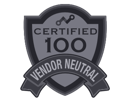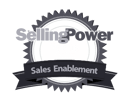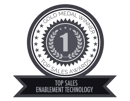
6 ways to create an actionable sales process
If it is one thing research shows time and time again, it is that top performing sales organizations adopt a structured approach to the way they sell. A key component of this structure is the sales process, which should reinforce the right behaviors and guide each member of the sales team towards the right next action.

However, designing and implementing a sales process that teams actually execute in the field is easier said than done. A sales process must be more than four generically named phases in a drop down list. It needs to enable and guide, not restrict and confuse. If it is too simplistic and lack actionable advice, reps won’t follow it. If it is too complex to navigate, it meets the same fate.
While the mere thought of sales process may cause feelings of overwhelm, boredom, or the much feared overwhelming sense of boredom, there are ways to minimize pain and maximize output. Let’s cover 6 ways to create a more effective process for your team in 2016.
1. Identify the people involved (external and internal)
In complex sales, it is never about convincing only one person. Decisions are made by committee and research reveals that, on average, 5.4 people are involved in a B2B purchasing decision. Subsequently, a sales person’s job is to build consensus around our solution within the customer’s decision making team; however, in order to do so s/he must first find out who they are.
Start by defining the role of each person that needs to be identified in the buying center (to follow the research findings and best practice, map out 4-5 different roles). There are numerous methodologies with pre-defined terminology that can be utilized for this purpose, but you can also elect to keep it straightforward and use easy to understand titles such as “Main contact”, “Financial Decision Maker”, “Influencer” etc. How people involved in buying decisions act will vary depending on the organizational culture and there’s no cookie-cutter approach on how to succeed. However, your process will make sure that your sales people don’t make the mistake in rushing ahead with a single stakeholder before having understood how the buying team is composed.
Once you have documented the people your sales people need to identify within the customer’s organization, it’s time to gaze inward for a moment. Which internal resources will the sales person need to activate and involve in a given opportunity? There is no standard formula for this – it varies depending on your industry, type of sale and unique workflow. However, examples include:
- A technical pre-sales resource
- Project managers for delivery planning and preparation
- Legal contacts, for obtaining sign-off on contracts
2. Get your facts right
Before you do anything else, start documenting the facts that your sales people need to uncover and document as they work through a given opportunity from start to finish. This includes everything that is tangible, clear-cut and lends itself to quantitative analysis.
Chronologically, some of these facts need to be confirmed very early on, while others may not become available until the very last steps of the closing phase. In addition, facts can also change throughout the process (products and service offerings altered in line with customer needs, deal sizes can contract and expand etc). However, regardless of timing and fluctuations, it is important to determine the hard facts about the business case.
Some examples include:
- Products and services offered
- (Estimated) order value
- Competitors
- Current provider
- Customer profile: Geographic location / Number of employees / Annual Revenue
3. What questions need answers?
In B2B sales, it is imperative that the sales person asks the right questions at the right time. It’s easy to grow happy ears, but it’s hard to ask the hard questions. However, in order to truly understand the prospect, move deals forward and eventually win the business, important questions need to be asked and answered.
Compared to identifying facts and relevant stakeholders, these questions are meant to elicit a “free text” answer. These answers should paint a picture of what the project is all about. It should summarize the customer’s challenges and ambitions and help identify obstacles that need to be overcome in order to win their trust and help them reach a buying decision in our favor. There are plenty of resources available on this topic - below are just a handful of examples of questions that can be asked.
- What triggered their idea to change?
- Why are they changing now?
- What is the decision process for this project?
- What are their top 3 decision criteria?
- What obstacles can stop the project?
- What are they looking to achieve?
- Who ‘s the main proponent (and opponent) for the change?
4. Link items 1-3 to steps in the process
Ok, you have now identified the most important facts that need to be confirmed, the internal and external stakeholders that must be identified and managed, as well as the most important questions to ask. Or, put differently: the what, who and why of a sales project.
In order for this to work in practice, you need to guide your sales people in terms of chronology and sequencing. Using the phases of your sales process, start thinking about when they actually need to do what. Asking them to identify all stakeholders in a first meeting is rarely, if at all, possible; however, you’ll naturally want to avoid a situation where the sales person has only spoken to one contact when they are about to enter the closing phase.
So, map it out. At what point do we need to know about the competitors we are facing in this opportunity? When must we ask that uncomfortable question and identify the relevant players in the buying center? Your sales process should be able to dynamically adapt based on the information you learn along this journey. By sequencing these steps, you will create a best practice road map for your sales team to follow.
5. Apply the rules
In a sales process, all steps are not equal, or of equal importance. Some actions may represent best practices, but can be entirely optional for the sales person. Other steps may be crucial to execute in order to reach a successful outcome or milestone. A webinar invitation may be optional, whereas providing a convincing Cost of Inaction (CoI) could be made mandatory. A courtesy call is a nice touch; understanding the attitude and influence of each stakeholder in the decision making team is a must.
In summary, decide which steps that belong in the mandatory, important and optional categories.
6. What, why, when, how and with whom – the sales enablement piece
Finally, remember that the audience for your sales process are your sales people – in order for them to be effective, they need to be provided with the tools and resources required to execute, every step of the way. We talk a lot about sales enablement, sales execution and content in context. Subsequently, whenever they come to a new step in your process, they need to understand what to do (for example: first meeting), why it is important (short description advising the purpose of this meeting and outcome sought), how they should go about doing it (good resource: template with agenda and important questions to ask), when (for example, within 2 weeks of initial contact) and with whom (relevant internal and external stakeholders that need to attend).
I hope the above steps help you get started on improving your sales execution!
Looking for more on sales process? Here are a few of our additional free resources:
1. Our white paper on the importance of sales process.
2. To understand how your sales process comes to life in Membrain’s software, watch this 3 minute video (scroll down).
3. If you are ready to jump in and map out your process right now, use our designer tool (Excel):

By Fredrik Jonsson
You know people that get excited about things like pomodoros and timeboxing strategies? Fredrik is one of them. He's also a former freelance writer and subsequently a man of many words. Words used to help companies take action on better ways to increase sales effectivenes. Fredrik is our Chief Content Officer at Membrain, the world's first sales software helping companies move from merely having a sales strategy towards executing it on a daily basis.
Find out more about Fredrik Jonsson on LinkedIn









